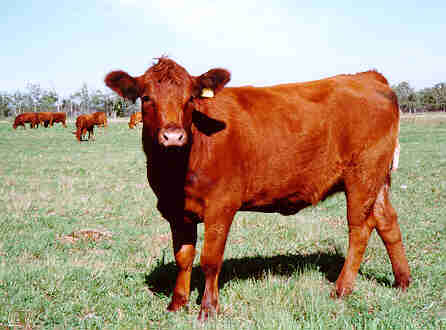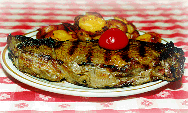
Heat Transfer Between a Plate and Your Food
Have you ever noticed that when you go out to eat at a restaurant that salads are served on cold plates and meat and potatoes are served on warm ones? Have you ever thought about why that is? Maybe the obvious answer to you is that meat and potatoes taste better hot and salads taste better cold.
|
In this segment of Chemical Engineering in Cooking, we are going to look at the chemical engineering involved in heat moving between a plate and the food resting on it. Take for example, a piece of steak on a glass plate. If a hot plate and a hot steak touch each other, then the resulting temperature will be higher than if a cold plate and a hot steak touch each other. This makes sense. Since steak is expected to be warm, restaurants serve it on a hot plate. This helps the steak stay warmer longer. Salads are expected to be cold, and so they are served on chilled plates. This example demonstrates a concept called heat transfer. Heat transfer is how heat moves from one object to another. |  |

 |
The heat from the meat is transferred into the plate. Think of it like this; you want to take a bath, so you turn on both the hot water and the cold water from the faucets. The final temperature of the water in the bathtub is somewhere in the middle of the temperature of the hot water and the cold water. The same concept applies with the meat and the plate. Heat from the meat is transferred into the plate so that the final temperature is somewhere in between the initial temperatures of each object. |
Here is something else to consider - would a small steak transfer more or less heat than a large steak? See answer.
Proceed to An Example: Heat Transfer of the Steak/Plate System
Return to Example on Heat Lost/Gained in a System
Return to Cooking a Potato
Return to Heat Transfer
[Introduction | Kinetics | Heat Transfer | Mass Transfer | Bibliography]
This project was funded in part by the National Science Foundation and is advised by Dr. Masel and Dr. Blowers at the University of Illinois.